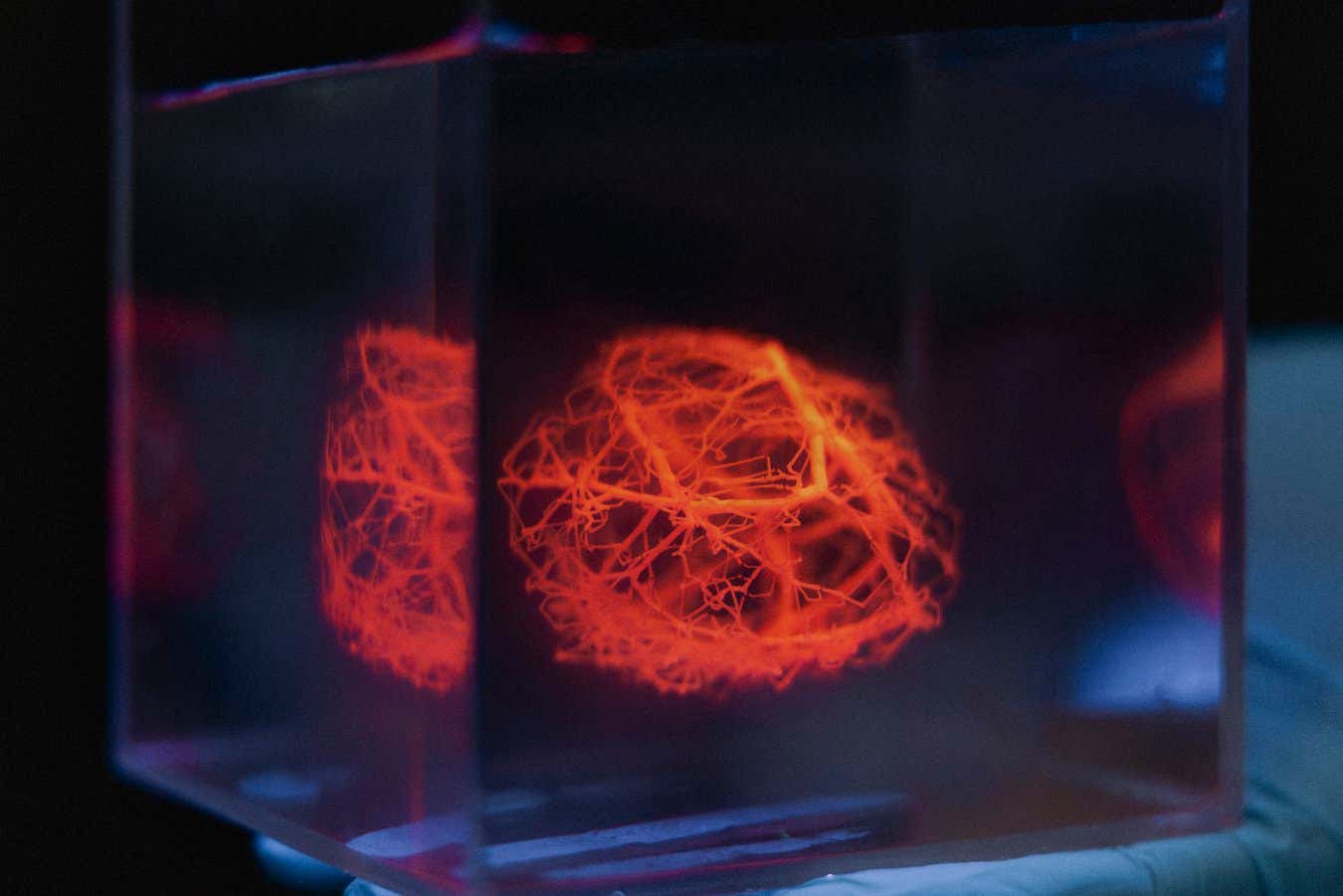Artificial organ transplants have been held back by the difficulty of making networks of blood vessels – a problem scientists are now taking steps to overcome
By Carissa Wong
12 June 2025
A blood vessel network designed by a computational model
Andrew Brodhead
A computational model that could rapidly design a blood vessel network for any 3D-printed organ may take us a step closer to transplanting artificial livers, kidneys or hearts without the need for a donor.
People with organ failure often require organ transplants, but only 10 per cent of the global transplant demand is being met. To fill this need, scientists are developing ways to 3D-print organs in the lab. But these require blood vessel networks to stay alive, and existing experimental methods for designing these take days or even weeks.
Read more
A new understanding of how your blood type influences your health
Advertisement
To address this, Alison Marsden at Stanford University in California and her colleagues built a computational model that can design these networks for any organ based on a mathematical law that describes how blood vessels branch into smaller ones in the body.
They tested their approach by having the model design a network of 25 vessels for a 1-centimetre-wide ring-shaped structure that had been 3D-printed from kidney cells, which it did in just a few minutes.
The team then printed the vessel network into the ring using cold gelatin particles, before heating it to 37°C (98.6°F), which melted the gelatin and left a network of hollow, 1-millimetre-wide channels that mimicked blood vessels. The researchers then continuously pumped a liquid containing oxygen and nutrients through the channels to simulate normal blood flow.
